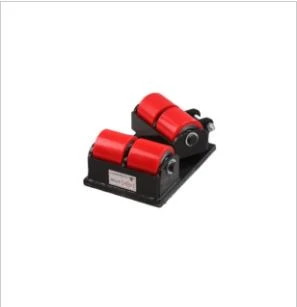Lifting Steel Plates with Powerful Magnets for Efficient Handling Solutions
The Magnet for Lifting Steel Plates An Indispensable Tool in Industry
In the realm of heavy lifting and industrial applications, efficient tools play a crucial role in enhancing productivity and ensuring safety. One of the most remarkable innovations in this domain is the lifting magnet, particularly designed for handling steel plates. This article explores the functionality, advantages, and applications of magnets for lifting steel plates, shedding light on their significance in various industrial sectors.
Understanding Lifting Magnets
Lifting magnets are devices that utilize magnetic force to lift and transport heavy ferrous materials. These magnets are equipped with powerful electromagnets or permanent magnets, allowing them to securely grab onto steel plates and other metallic items. Depending on the design, lifting magnets can adhere to various shapes and sizes of metal, ranging from thin sheets to thick plates.
How Do They Work?
Electromagnetic lifting magnets operate using principles of electromagnetism. When electricity flows through the coil wrapped around the magnet, it generates a magnetic field, attracting metal objects to its surface. The strength of the magnetic hold can be adjusted, making it versatile for handling varying weights. Permanent magnets, on the other hand, rely on permanent magnetism; they do not require an external power source, making them energy-efficient and easy to use.
Advantages of Using Lifting Magnets
1. Enhanced Safety One of the most significant benefits of lifting magnets is the enhancement of workplace safety. Unlike traditional hooks or chains that can slip or break under heavy loads, magnets provide a secure grip on the steel plates, reducing the risk of accidents and injuries.
2. Increased Efficiency Lifting magnets streamline the handling process. They enable faster loading and unloading of steel plates, reducing the time and labor required for transport. This increase in efficiency translates into higher productivity levels in manufacturing and construction environments.
3. Reduced Labor Costs With the automation of lifting tasks, fewer workers are needed to perform heavy lifting, leading to reduced labor costs. Additionally, operators can move plates without the need for multiple cranes or lifting devices.
magnet for lifting steel plate

5. Versatility Lifting magnets come in various shapes and sizes, making them adaptable for different applications. They can be used in factories, warehouses, and construction sites for a wide range of tasks, from moving large sheets of metal to lifting small components.
Applications of Lifting Magnets
The utility of magnets for lifting steel plates spans across several industries, including
- Manufacturing In factories, magnets play a crucial role in assembling, transporting, and storing steel sheets and components.
- Construction Lifting magnets are extensively used on construction sites for moving steel beams and plates during the erection of structures, ensuring efficiency and safety.
- Scrap Yards and Recycling Magnets facilitate the sorting and moving of scrap metal, allowing for easier processing and recycling of ferrous materials.
- Shipbuilding In shipyards, lifting magnets are employed to move heavy steel sections and plates required in ship construction, improving the overall workflow.
Conclusion
The introduction of lifting magnets for steel plates has revolutionized the way industries handle heavy materials. Their safety and efficiency improvements are invaluable, enhancing productivity while minimizing risks. As industries continue to evolve and demand improved operational methods, lifting magnets are expected to play an increasingly vital role in modern manufacturing and construction processes. Investing in high-quality lifting magnets can lead to significant long-term benefits, making them an indispensable tool in today's industrial landscape. As we move forward, the advancements in magnet technology will likely lead to even more innovative solutions, further transforming heavy lifting operations.
-
Unlock Seamless Relocation with Our Heavy Equipment Moving ExpertiseNewsJun.06,2025
-
Unleash Unrivaled Flexibility with Our Adjustable Gantry CraneNewsJun.06,2025
-
Unleash Heavy-Duty Efficiency with Our Industrial Gantry Crane SolutionsNewsJun.06,2025
-
Revolutionize Steel Handling with Our Magnetic Lifter RangeNewsJun.06,2025
-
Master Equipment Mobility with Premium Machinery Mover SolutionsNewsJun.06,2025
-
Elevate Your Material Handling with Magnetic Lifter TechnologyNewsJun.06,2025
-
YS Permanent Lifting Magnets: The Smarter Way to Handle SteelNewsMay.22,2025
